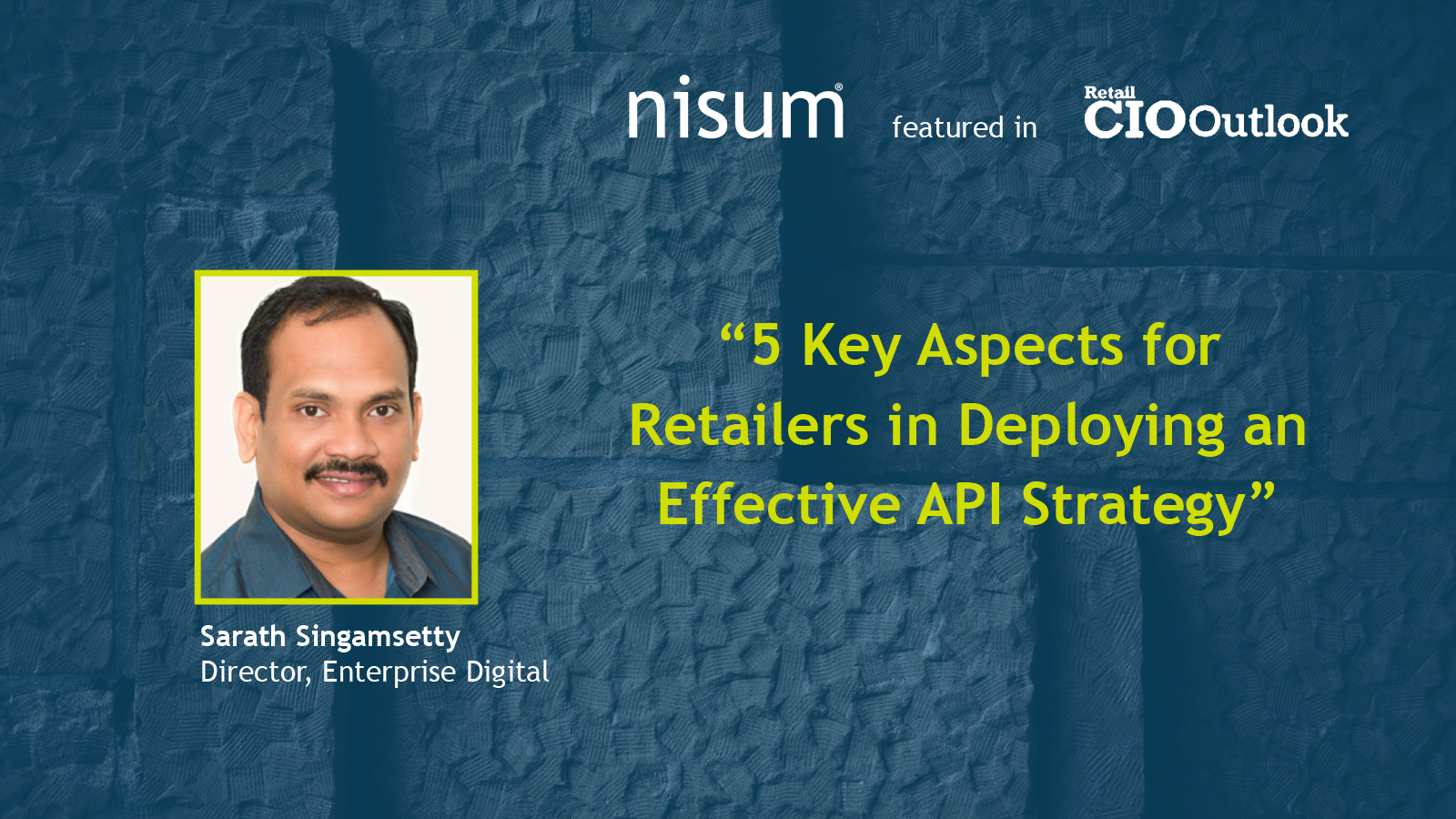Nisum Director of Enterprise Digital, Sarath Singamsetty, explains 5 important aspects of an API strategy that will not only promote success today but continue to stay effective over time in his article published in Retail CIO Outlook. You can read the full text below or visit the published article here.

5 Key Aspects for Retailers in Deploying an Effective API Strategy
In today's digital age, data and information have become a retail organization's biggest asset. With the number of channels through which companies interact with customers proliferating (web, mobile, social, connected devices, in-person, etc.), only those organizations that are able to collect and manage data effectively will be successful.
Enter APIs; the connective tissue between applications that enable companies to access and/or collect data through different channels. By enabling retailers to monetize this information and generate new avenues of income, a successful API strategy is a key element of digital transformation.
In order to be effective, however, the API strategy should contain the following five elements.
1. Determine clear business objectives.
As with any new IT implementation, clear business objectives must be set before a single dollar is invested. Different APIs serve different purposes, and as such, have different requirements for implementation within an organization. Business objectives might include new channels for customer outreach, better integration with partners, or faster/more efficient execution of technology or business processes.
2. Identify and define the digital asset being exposed through an API.
Not every API should be exposed. One factor to consider is monetization. When selling a service through an API, it makes sense to expose that API. On other hand, if a certain API provides an internal business advantage, like users being able to easily access information across apps and channels, this should remain proprietary. Once an organization can clearly determine what value an API brings (this is different from the business objective), it can decide whether to open it up.
3. Properly design and structure the API.
APIs must be both flexible and extendable. As an example, an online retailer might offer customers the option to purchase through Pinterest integration using an API. The retailer finds that this is driving new sales, and so decides to add another payment type to the API. This must be done in a way that doesn't impact the customer experience at all. Similarly, when discontinuing an API, it must be done in such a way that customers who are using it don't suddenly wake up one day to find it has been blocked. Like products, APIs have a lifecycle and must be unsettled properly. APIs with different granularity needs to be designed and developed considering client usage. As an example, mobile clients need different APIs for product catalog, shopping bag, and checkout, whereas a Pinterest integration app might need just one API to support single-click purchase. With a proper microservices strategy, this can be achieved.
4. Manage and control the APIs.
It's impossible to talk about API management without mentioning the API gateway. The gateway is important because it determines many of the APIs features, from how they are scaled and controlled to the security of API management.
When it comes to scaling, the gateway must able to work on-premises and in the cloud. Similarly, throttling prevents an API from becoming overwhelmed by too many requests. With consumers increasingly turning to web and mobile to make purchases, throttling provides an ability to manage and control the traffic coming in, which is key to retaining loyal customers.
5. Engage and communicate with developers.
Developer portals allow developers to login, see how responses can be made, and review all the proper documentation. It's difficult for APIs to be successful when administrators represent one step of removal between developers and APIs. In this instance, the end-users are the developers, and must be engaged and communicated with accordingly. Well-supported and documented APIs will keep developers engaged and drive revenues.
Digital transformation is well underway for today's modern enterprise, and APIs are the glue that holds together an ever-expanding number of business processes and customer channels. However, if in order is truly effective and yields real business results, the right implementation of API strategy is essential. Retail organizations that view their API strategy through the lens of the five elements discussed above are preparing to compete not only today but also for tomorrow's advantage.




